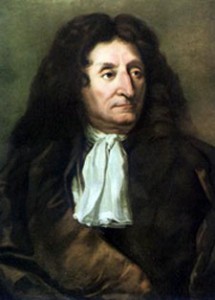 Born in 1621 in Champagne, French poet Jean de La Fontaine was perhaps one of the most famous and popular writers of his time and is best known for his work Fables Choisies. His father was a forestry manager and the family would be considered today upper middle class. For most of his childhood, La Fontaine went to school in Rheims before going on to study law.
Born in 1621 in Champagne, French poet Jean de La Fontaine was perhaps one of the most famous and popular writers of his time and is best known for his work Fables Choisies. His father was a forestry manager and the family would be considered today upper middle class. For most of his childhood, La Fontaine went to school in Rheims before going on to study law.
His father arranged for him to marry with a subsequent dowry but La Fontaine did not get on with his 15 year old wife, although she was considered both beautiful and intelligent. For much of the early part of their marriage, La Fontaine made every attempt to go to Paris and it is noted that he first read the work of Malherbe there and it prompted him to become a poet.
By this time he was in his 30s and his first work of seriousness – he dabbled in short verses and epigrams to begin with – didn’t appear until 1654. His translation of Eunuchus of Terence earned him a sizeable pension in return for some quarterly works. He also worked on some prose and poetry at this time, including the collection Le Songe de Vaux.
One of the most important literary associations in the history of France was the Rue du Vieux Colombie of which La Fontaine, along with the likes of Moliere, was a member. He seemed to be blessed with the knack of making powerful and influential friends and his fame began to grow. His work is generally divided into three distinct sections: the Contes, the Fables and his other, miscellaneous works.

The first book of his Contes came out in 1664 and two years later he produced the second collection along with the first of the Fables. After being successful for a period he began to fall on harder times when his patron the Duchess of Orleans died. His bad luck was short lived though and he was invited to stay at the house of another patron, Madame de la Sablière, where he remained in comfort for the next 20 years.
With the popularity of his Fables growing, La Fontaine was proposed to the French Academy for which he had to be voted in. It took several attempts but he was finally able to take up his place in the Academy though it was often a relationship filled with turmoil and internal battling notably with Antoine Furetière who seemed to see enemies, including La Fontaine, everywhere.
When his patron Madame de la Sablière passed away, he was immediately asked to make his home with Monsieur and Madame d’Hervart. It was a testament to his popularity that he was never short of willing patrons to take him in.

In 1692, La Fontaine produced a revision of his Contes but a short time after started to suffer periods of illness that led him to turn to religion. He continued to write as he battled bad health but finally died in 1695 at the age of 73.

